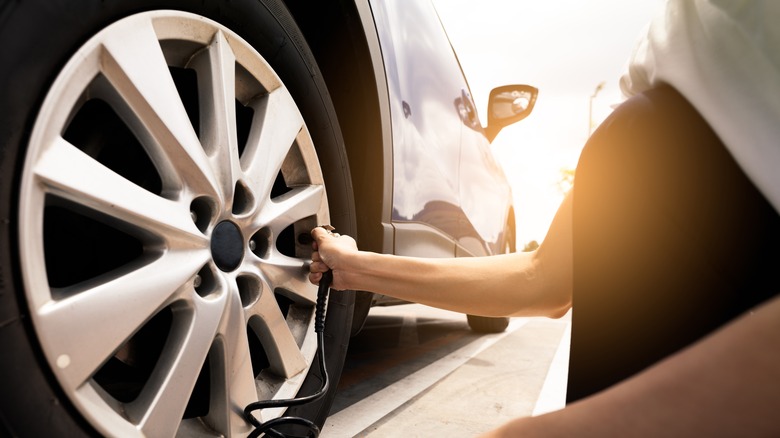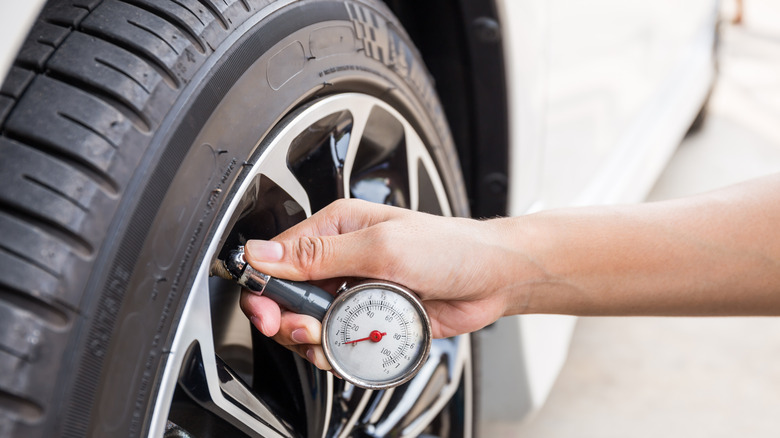Should You Adjust Your Tire Pressure Based On The Weather?
You have probably heard that regularly checking your vehicle's tire pressure would yield significantly better gas mileage and a safer drive. However, is it necessary to adjust the tire pressure based on prevailing weather conditions? The answer is yes, and it concerns how air or gas reacts to changing temperatures. No matter how great your tires are, the air inside will expand under intense heat and contract when the ambient temperature is cold.
On average, tire pressure can adjust by one psi (pound per square inch) for every 10-degree F fluctuation in air temperature, and the deflation rate increases in icy or snowy weather. It may not seem much, but the difference is enough to affect your ride's fuel economy. For instance, if the mercury drops 40-degrees F overnight, the tire pressures will fall by about four psi, enough to trigger your vehicle's TPMS (tire pressure monitoring system) light on a frosty morning. If this happens, don't panic. You're probably dealing with under-inflated tires instead of a flat.
Under-inflated tires could lower gas mileage by about 0.2% for every one psi drop in tire pressure. On the contrary, driving with properly inflated tires yields 3% better gas mileage.
How does hot weather affect tire pressure?
The rate at which a tire deflates in cold weather is the same as when the tire pressure expands in hot weather. For example, a 40-degree F rise in temperature will raise the pressure by four psi, possibly leading to overinflated tires.
Driving with overinflated tires is just as dangerous and costly as driving with under-inflated tires. It could affect your vehicle's handling and stability, and overinflation causes premature tire wear and even excess pollution. Moreover, an excess in tire pressure would not trigger a TPMS warning, which leads to a false impression of driving with properly inflated tires.
Whether the outside temperature is hot or cold, make it a habit to periodically inspect your car's tire pressures, preferably every time you gas up. Consider purchasing a top-rated tire inflator, a handy tool to keep in the trunk for emergencies, or topping up your tires with air.
The NHTSA recommends checking the pressure of all tires (including the spare tire, when applicable) at least once a month and doing so when the tires are "cold" or have not been driven for at least three hours to obtain a more accurate reading.

